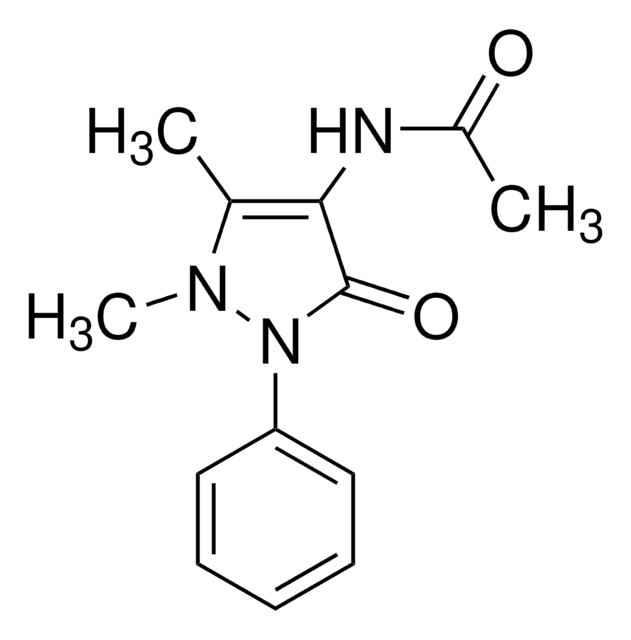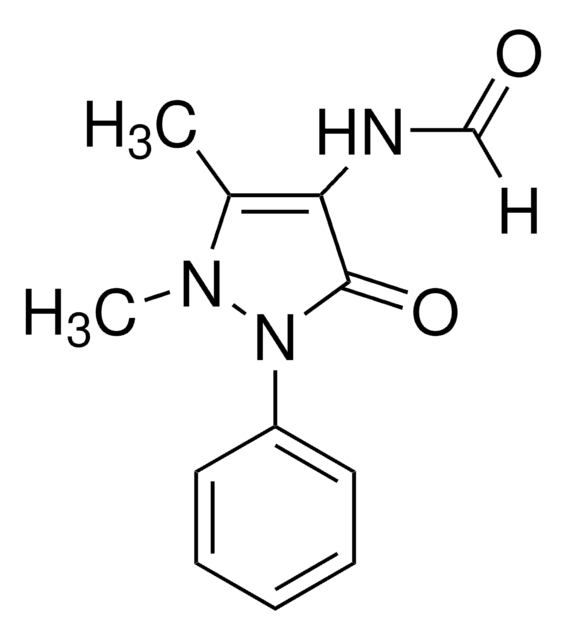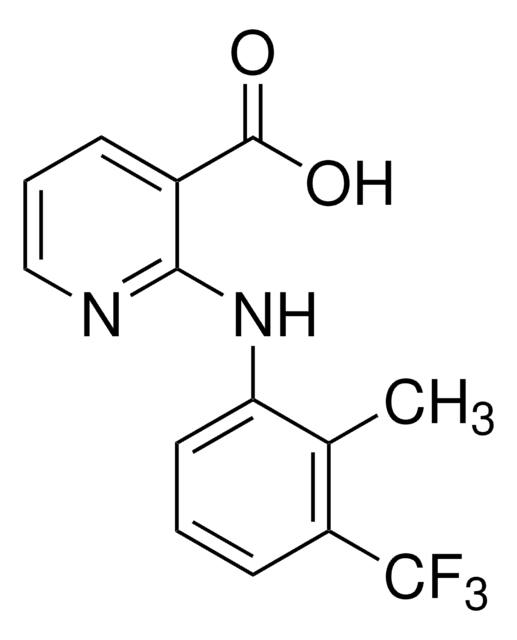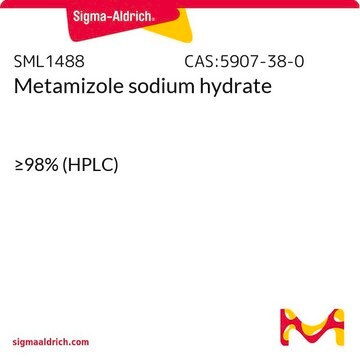32595
4-Formylaminoantipyrine
VETRANAL®, analytical standard
Synonym(s):
N-(1,5-Dimethyl-3-oxo-2-phenyl-2,3-dihydro-1H-pyrazol-4-yl)formamide
About This Item
Recommended Products
grade
analytical standard
Quality Level
product line
VETRANAL®
shelf life
limited shelf life, expiry date on the label
technique(s)
HPLC: suitable
gas chromatography (GC): suitable
application(s)
pharmaceutical
format
neat
SMILES string
CN1N(C(=O)C(NC=O)=C1C)c2ccccc2
InChI
1S/C12H13N3O2/c1-9-11(13-8-16)12(17)15(14(9)2)10-6-4-3-5-7-10/h3-8H,1-2H3,(H,13,16)
InChI key
WSJBSKRPKADYRQ-UHFFFAOYSA-N
Looking for similar products? Visit Product Comparison Guide
Related Categories
General description
Application
- Aqueous samples by ultra-high performance liquid chromatography-high resolution mass spectrometry (UHPLC-HRMS).
- Groundwater, surface water and wastewater samples by online mixed-bed multilayer solid-phase extraction (SPE) and HPLC combined with tandem mass spectrometry (MS/MS).
Legal Information
Signal Word
Warning
Hazard Statements
Precautionary Statements
Hazard Classifications
Acute Tox. 4 Oral
Storage Class Code
11 - Combustible Solids
WGK
WGK 3
Choose from one of the most recent versions:
Already Own This Product?
Find documentation for the products that you have recently purchased in the Document Library.
Customers Also Viewed
Our team of scientists has experience in all areas of research including Life Science, Material Science, Chemical Synthesis, Chromatography, Analytical and many others.
Contact Technical Service










